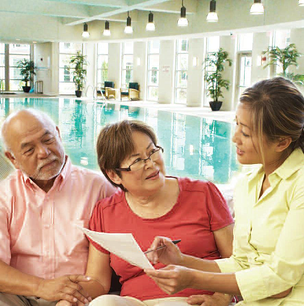 Part 1: Who Should Be Contributing to Resident Wellness?
Part 1: Who Should Be Contributing to Resident Wellness?
There are many interpretations of what a community “wellness program” should be, and to be fair, many interpretations are quite valid. We’re not saying one size fits all; quite the contrary. What we are saying is that there are multiple VALID interpretations of resident wellness and making your community aware of the potential variety (pulling away from “this is what we’ve always done”) will be beneficial for all. Tap into the unique skill sets of your community personnel to cultivate a harmonious and healthy lifestyle for your residents.
For example, resident health services and therapy departments may perceive clinical programs such as health metrics screenings or gait analysis as wellness programming. Your activities personnel may perceive socialization and educational seminars as a wellness program, whereas your community fitness personnel perceive prevention programming such as balance training and healthy eating as wellness. The answer to which of these options is truly a wellness program is “all of the above”—if they are executed effectively with a collaborative approach to promote resident well-being.
Oftentimes there are power grabs at play among community personnel on who is offering wellness or who should be involved in certain types of programming. We’ve written about silos and power grabs before. A well-rounded wellness program cannot truly exist until these power grabs are set aside and everyone learns to contribute to the greater good of resident care and well-being as a team. After all, how long will a resident truly be successful upon discharge from therapy services if they don’t have the support of fitness programming to continue their progress? Or what good is an educational lecture on the importance of managing your blood pressure as coordinated by your activities personnel if health screenings and clinical support are not available?
The needs and expectations of today’s residents are too dynamic and unique to have a “wellness program” facilitated through the vision of one department or one individual. To best serve the needs of residents, all departments should be contributing their own skill sets under a central mission for improving resident well-being.
In doing so, your community will be able touch on many different dimensions of wellness from one department to the next without placing the entire programming burden on one or two individuals. In turn, the scope of possibilities in programming is not as limited and a current of wellness-based lifestyle programs and options will flow from one department to the next. If you were to remove one of these departments, it would likely create a gap in your program. This collaboration can demonstrate to existing and prospective residents that individual agendas and power grabs are not the priority at your community, but improved resident well-being through collaboration is!
You won’t want to miss part 2 of this blog, in which we look into eight specific examples of where your key community players can contribute to well-rounded wellness programming.
